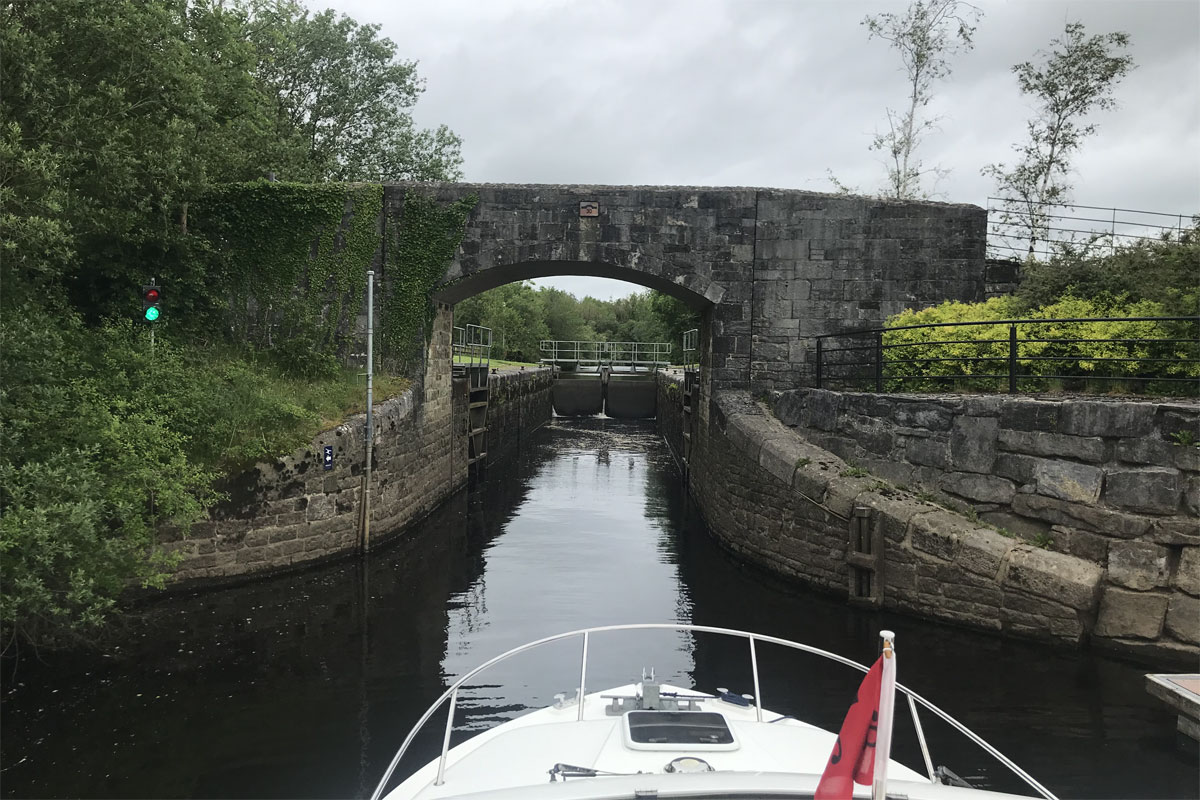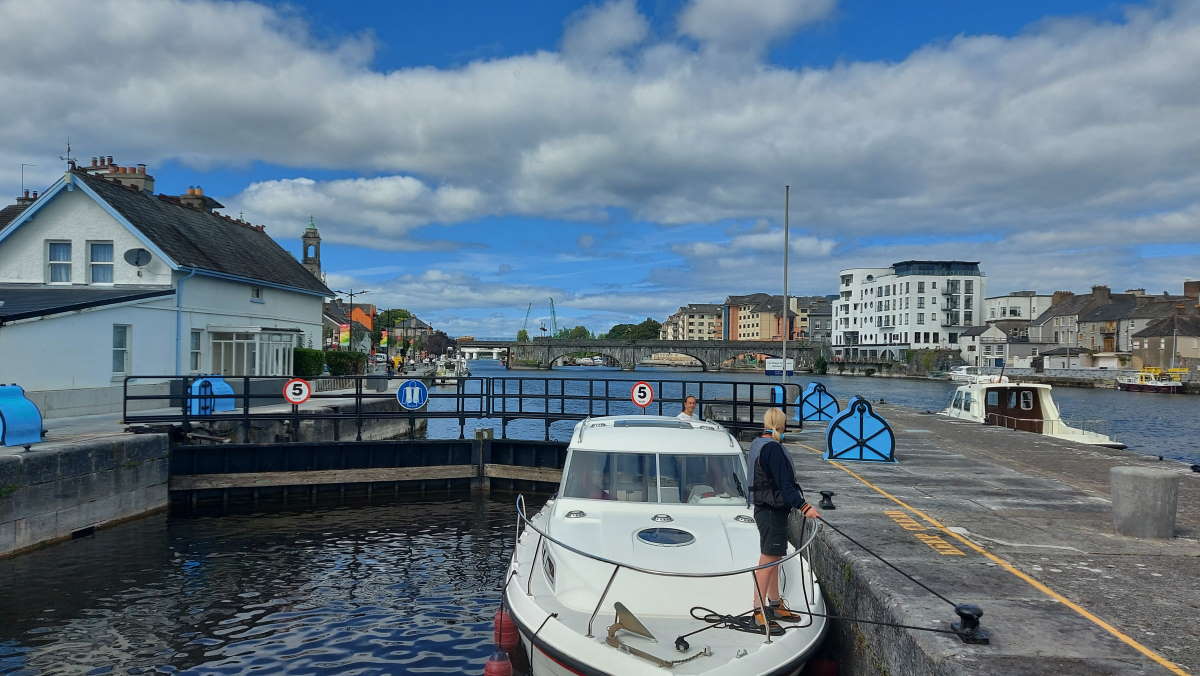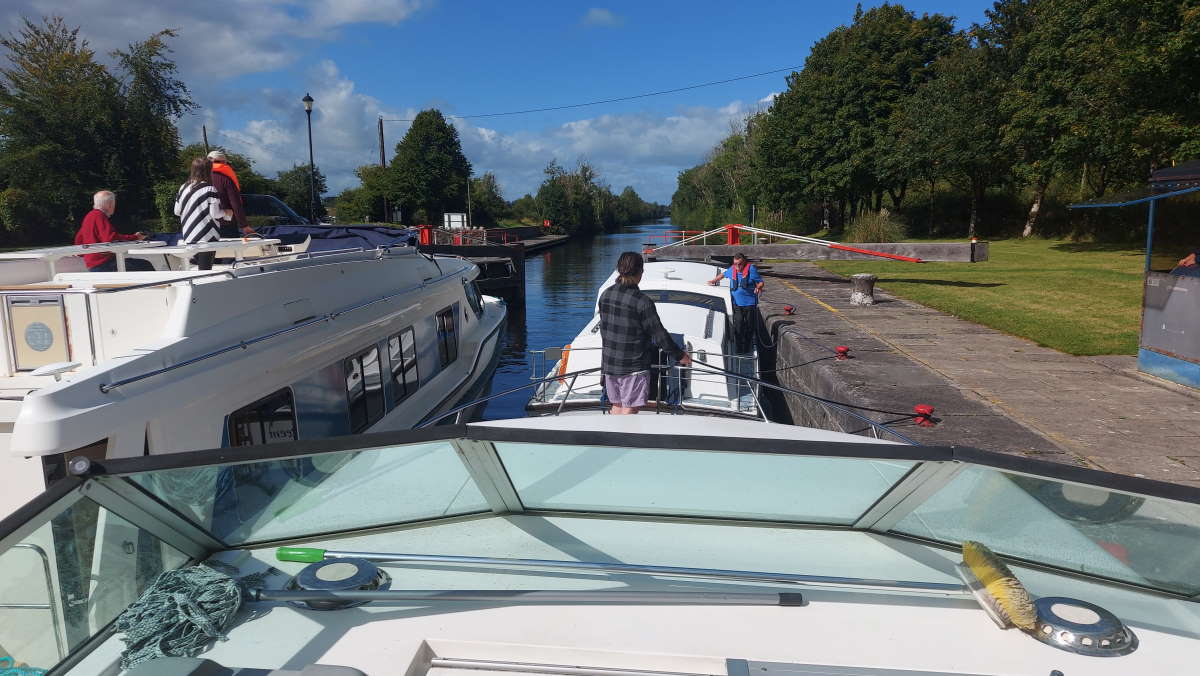Why Locks?
A canal lock is a device used for raising and lowering boats, ships, and other watercraft between stretches of water of different levels on river and canal waterways. Locks allow boats to travel uphill or downhill along a waterway that would otherwise be too steep for them to navigate. Here’s how a typical canal lock works:
- Approach: A boat approaches the lock when the water level inside the lock chamber matches the level of the waterway on which the boat is traveling.
- Entering the Lock: The lock gates at the entrance (downstream or upstream, depending on the direction of travel) are opened, and the boat enters the lock chamber. Once inside, the gates are closed behind the boat.
- Filling or Emptying the Lock: If the boat needs to be raised, water is allowed to enter the lock chamber from the higher level waterway through sluices or valves, raising the water level and the boat. If the boat needs to be lowered, water is drained from the lock chamber to the lower level waterway, lowering the water level and the boat.
- Exiting the Lock: Once the water level inside the lock matches the level of the next section of the waterway, the exit gates are opened, and the boat exits the lock.
Locks are essential for allowing navigation on canals and rivers with varying elevations, and they come in various designs, including single, double, and staircase locks, to handle different types of waterways and vessel sizes.
LOCKS ON SHANNON SYSTEM
ALWAYS
Approach locks slowly and keep out of the way of vessels exiting. If your cruiser has two driving positions then stop the boat in open water away from any obstacles and engage the upper controls before your approach. The upper driving position will provide better visibility. If the lock gates are closed when you approach, you can moor up or circle around waiting for the gates to open. Once the gates are open and all craft have exited, you can proceed slowly and carefully. When entering the lock, the lock keeper will offer a boat hook to take the rope, ropes must not be thrown.
GOING SOUTH OR DOWNSTREAM
Have 2 crew members ready with the two mooring ropes (1 forward & 1 aft) to give to the lock keeper. Make sure the ropes pass outside and under the safety hand rails. The rope will be placed around a bollard and returned to the crew member to hold. Hold the rope tightly until the boat starts to drop and feed the rope out gradually but holding it firmly until the water level drops. When the lower gates are opened proceed slowly allowing the boats in front of you to exit first.
GOING NORTH OR UPSTREAM Again have 2 crew members ready with both mooring ropes to give to the lock keeper making sure they are under and outside the safety hand rail. The rope will be placed around a bollard and passed back to you to hold. Hold tightly as the boat begins to rise, keep the rope pulled in until the lock is full. Proceed out of the lock as before and remember to ensure your dinghy is tightly secured. Under no circumstances tie the ropes around the bollard or the cruiser. This could not only damage the cruiser but also injure a member of the crew. It is advisable to turn off your engine, while in the lock to avoid Diesel fumes.
LOCKS ON SHANNON-ERNE SYSTEM
The link between the Shannon and Erne is approximately 65km in length. The 16 locks on the Shannon-Erne Waterway are operated by a push button electro-hydraulic system. This is activated by a smart card which can be purchased at most marinas and at the 1st lock. These also access the service blocks along the Erne system. All 16 locks are operated by the hirer. Follow instructions provided. While cruising on this stretch of waterway, pay particular attention to the speed limit, maximum speed limit is 5km per hour. Please ensure you leave no wake from the boat as this speed limit is strictly enforced to avoid damage and erosion of the river banks. Assuming there are no delays at the locks, the minimum journey from one end of the Shannon-Erne Waterway to the other is approx. 13 hours.
The Driftwood Boat Blog have a great video on the locks on the Shannon-Erne waterway that's worth a look. Waterways Ireland have a video with instructions on YouTube.

Locks on the Shannon-Erne waterway are narrower and fully automatic.

Ready to drop in Athlone lock.

It's common for several boats to pass through a lock at the same time.